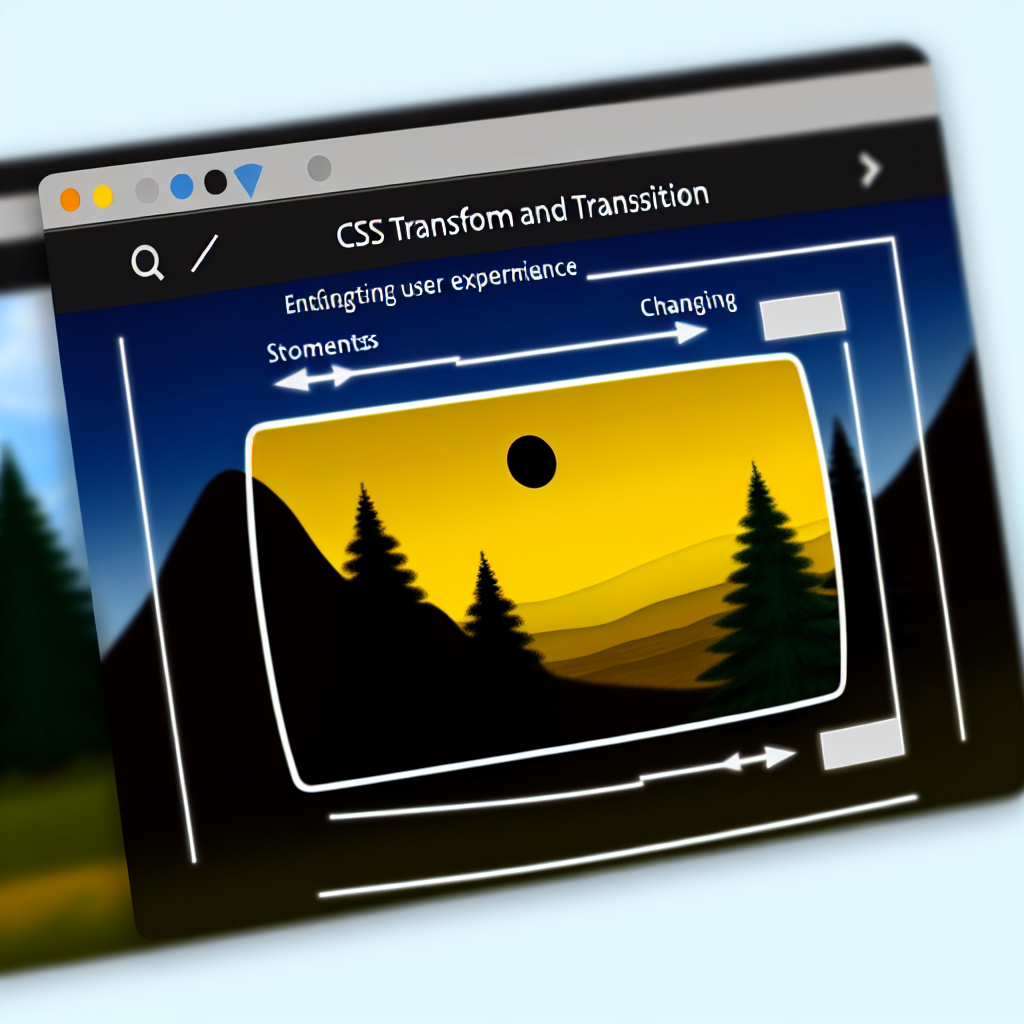In modern web design, creating smooth, engaging user experiences relies heavily on CSS transformations and transitions. These properties enable developers to animate elements seamlessly, enhancing interactivity and visual appeal. In this article, we will explore the CSS transform and transition properties, their practical applications, and how to implement them effectively in your projects.
Understanding the CSS transform Property
The transform property is a powerful tool that allows you to manipulate the visual appearance of elements by applying various operations such as translation, scaling, rotation, and skewing. Unlike traditional positioning, transform modifies the rendering of an element without affecting the document flow, making it ideal for creating dynamic effects.
Common transform functions include:
- translate(): Moves an element along the X and Y axes
- scale(): Enlarges or shrinks an element proportionally or non-proportionally
- rotate(): Rotates an element clockwise or counter-clockwise
- skew(): Skews an element along the X and Y axes
Example:
div {
transform: rotate(45deg) translateX(50px);
}
This code rotates a div by 45 degrees and moves it 50 pixels along the X-axis.
Applying Smooth Transitions with the transition Property
The transition property complements transform by enabling animations to occur smoothly over a specified duration. Rather than instantly changing styles, transitions create a gradual change, significantly improving user experience.
The basic syntax for transition includes:
- property: Specifies which CSS property to animate (e.g., transform)
- duration: Defines how long the transition lasts (e.g., 0.3s)
- timing-function: Controls the acceleration curve (e.g., ease-in-out)
- delay: Sets a delay before the transition starts
Example:
button {
transition: transform 0.3s ease-in-out;
}
button:hover {
transform: scale(1.2);
}
When a user hovers over the button, it smoothly enlarges, thanks to the transition effect.
Combining transform and transition for Dynamic Effects
By integrating transform and transition, developers can craft visually appealing effects such as flipping cards, sliding menus, or animated buttons. The key is to define the transformation in the hover or active state and specify a transition for a smooth effect.
For example, creating a flip card involves:
.card {
width: 200px;
height: 300px;
perspective: 1000px;
}
.card-inner {
position: relative;
width: 100%;
height: 100%;
transition: transform 0.8s;
transform-style: preserve-3d;
}
.card:hover .card-inner {
transform: rotateY(180deg);
}
This setup rotates the inner card on hover with a smooth transition, simulating a flip effect.
Conclusion
Mastering the CSS transform and transition properties unlocks a wide range of possibilities for creating engaging and interactive web elements. By understanding how to manipulate element visuals smoothly and efficiently, you can elevate your web designs significantly. Implementing these properties thoughtfully ensures your website is both functional and visually appealing, providing users with a seamless experience.
